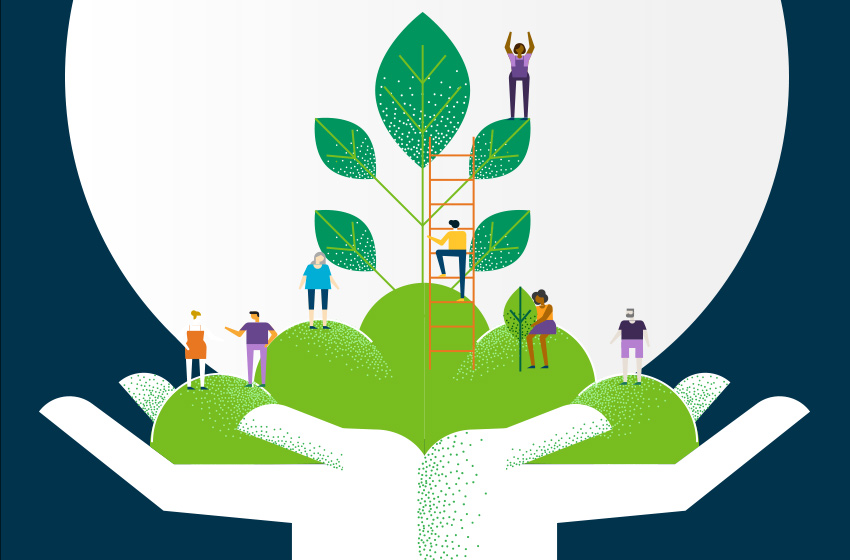This blog is drawn from a discussion between Ian Nelson, MD Q2 EMEA, Roy Warren, CEO at Folk2Folk, and Pankaj Soni, Executive Director at MBD Credit Goldman Sachs at the AltFi Festival of Finance 2021. Watch the on-demand video here.
Lenders have been critical to the survival of almost every kind of business over the last 18 months. Unprecedented government support and private forbearance have likely made the difference between a wave of potential insolvencies and - the reality - a great many businesses that were able to survive, and even pivot to deliver their products and services in a different way.
And lending will continue to be critical for the recovery. As government support winds down, forbearance periods end, and repayment becomes a requirement across the board, fast access to reasonable credit will make the difference. But this borrowing will be different. A good portion of it will come from alternative lenders, and many of those lenders will be using complex technology stacks to assess borrowers, and disburse cash.
Bringing the client closer
“Over the past year or so, our clients have been looking at ways of bringing their own clients closer to them,” says Ian Nelson of Q2. “That’s for a couple of reasons. First, they need to be able to do everything online - portals, documentation, e-signatures and so on. Second, they want to be able to monitor their clients in real-time. This is a volatile market and they want to be flexible. It’s not possible to do that with legacy tech.” For Roy Warren at local peer-to-peer lender Folk2Folk, “initially there was a lot of uncertainty and doubt, but we determined that we had to make our customers feel like nothing had changed. Customer confidence was key.” Folk2Folk met their goals with technology. “We were already introducing a new system, but we accelerated this. We started getting portals in place for online application and investment, and we designed ways for our customers to get in touch with us 24/7 if need be.” As a result, Folk2Folk has had its best year yet, and considers speed of execution to be one of its greatest achievements.
Real-time data for considered decisions
And at MBD Credit Goldman Sachs, Pankaj Soni described how they experimented early on with know-your-customer (KYC) technology. “We looked at our processes and identified areas where there were hard-line decisions that could be applied automatically in the tech stack, to speed things up.” And they used real-time data to determine their strategy too, using APIs that fed data into their modelling. “We focused early on a bifurcated strategy: those sectors that were badly affected - like travel and leisure - we were very cautious about. With the others, we were able to be more lenient. But it’s not possible to have a flexible strategy without continuous, up-to-the minute data.”
Lenders are cautiously optimistic
As for the future, there is some optimism. “It’s cautious, though,” warns Warren. “We expected more forbearance requests at the beginning than we actually got. But there’s probably going to be a cliff-edge where the government support disappears and people have to start paying the money back.” But there are green shoots, he argues, “there’s some that have a lot of confidence about pent-up demand, and cash chests. But the important thing for us is that we continue to scrutinise the benchmarks of serviceability and the security that sits behind the business plan.” Such scrutiny is greatly aided by a tech stack that integrates best-in-class APIs from the financial ecosystem.
For Ian Nelson at Q2 a bit of optimism is necessary for businesses to even begin to upgrade their tech stack. But ultimately, he argues, open architecture systems are the future of lending. “Having that open API system is key. Salesforce is one of those architectures that allows you to leverage the ecosystem to bring solutions together.” But, says Nelson, it’s not about doing the ordinary, quicker. “The technology actually enables you to bring something different to the market. You can take the best in breed, bring them together, and develop something new and powerful to take to market. Technology like this is allowing lenders to have a unique selling point.”
A unique opportunity
Whether or not the market will see the recovery lenders want is unknown. But some things are obvious. “Fintechs and neobanks are achieving a great deal,” says Soni. Competition is now fierce. And there will be some trouble along the way. “As lenders, we will all have to keep reviewing our portfolios and be as sympathetic as we can,” says Warren. But Q2’s Nelson says that a tricky market is where open architecture technology systems come into their own. “There’s a unique opportunity for lenders to provide even more support to their customers now. Metrics, automation, algorithms, scalability, real-time decision-making. With technology, you can manage the risks and make the green shoots of recovery grow faster.”
Watch the full on-demand session here.
Learn more about Q2 and our approach to digital lending by visiting our Beyond Transformation website.





